Sodium tripolyphosphate
Synonym(s):STPP;Sodium triphosphate;Pentasodium tripolyphosphate;Sodium triphosphate pentabasic;Sodium tripolyphosphate pentabasic
- CAS NO.:7758-29-4
- Empirical Formula: Na5O10P3
- Molecular Weight: 367.86
- MDL number: MFCD00003514
- EINECS: 231-838-7
- SAFETY DATA SHEET (SDS)
- Update Date: 2025-01-27 09:38:02
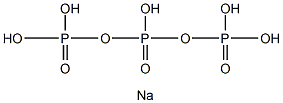
What is Sodium tripolyphosphate?
Chemical properties
white or colourless crystals, granules or powder
The Uses of Sodium tripolyphosphate
Sodium tripolyphosphate is a binder, stabilizer, and sequestrant that is mildly alkaline, with a pH of 10, and moderately soluble in water, with a solubility of 15g in 100ml of water at 25°C. It is used to improve the whipping properties of egg-containing angel food cake mix and meringues. It reduces gelling of juices and canned ham and tenderizes canned peas and lima beans. It is a moisture binder in cured pork and protects against discoloration and reduces shrinkage in sausage products. In algin desserts, it functions as a calcium sequestrant. Sodium tripolyphosphate is also termed pentasodium tripolyphosphate and sodium triphosphate.
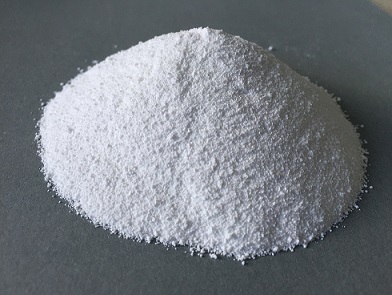
The Uses of Sodium tripolyphosphate
Sodium tripolyphosphate is used in water softening, heavy-duty fabric washing, automatic dish washing, drilling fluid cleaning and liquid cattle feed supplements. It is also used as a peptizing, emulsifying, dispersing agent and as a hydrogen peroxide solution stabilizer. It acts as a preservative for seafood, meats, poultry, and animal feeds. It finds application as a polyanion crosslinker in polysaccharide based drug delivery. Further, it is used as a sealant for leaking farm ponds and a calcium and magnesium chelating agent. In addition to this, it is used in ceramics, leather tanning, flame retardants, paper pulping, paper coatings, textile processing, ore flotation, anticorrosion pigments and rubber production.
The Uses of Sodium tripolyphosphate
for the determination of BSB acc. to DIN 38409-H 51
What are the applications of Application
Sodium tripolyphosphate is used for the determination of BSB
Flammability and Explosibility
Non flammable
Purification Methods
Purify it by repeated precipitation from aqueous solution by slow addition of MeOH and dried in air. Also a solution of anhydrous sodium tripolyphosphate (840g) in water (3.8L) is filtered, MeOH (1.4L) is added with vigorous stirring to precipitate Na5P3O10.6H2O. The precipitate is collected on a filter, air dried by suction, then left to dry in air overnight. It is crystallised twice more in this way, using a 13% aqueous solution (w/w), and leaching the crystals with 200mL portions of water [Watters et al. J Am Chem Soc 78 4855 1956]. Similarly, EtOH can be added to precipitate the salt from a filtered 12-15% aqueous solution, the final solution containing ca 25% EtOH (v/v). Air drying should be at a relative humidity of 40-60%. Heat and vacuum drying should be avoided. [Quimby J Phys Chem 58 603 1954, Klement in Handbook of Preparative Inorganic Chemistry (Ed. Brauer) Academic Press Vol I p 547 1963.]
Properties of Sodium tripolyphosphate
| Melting point: | 622 °C |
| Density | 2.52 g/cm3 (20℃) |
| vapor pressure | <0.1 hPa (20 °C) |
| storage temp. | Storage temperature: no restrictions. |
| solubility | H2O: may be clear to slightly hazy |
| form | Powder/Solid |
| color | White |
| Odor | Odorless |
| PH Range | 9.5 - 10.3 at 1 g/l at 20 °C |
| PH | 9.0-10.0 (25℃, 1% in H2O) |
| Water Solubility | 20 g/100 mL (20 ºC) |
| Sensitive | Hygroscopic |
| Merck | 14,8697 |
| Stability: | Stable. Incompatible with strong oxidizing agents, strong acids. Hygroscopic. |
| CAS DataBase Reference | 7758-29-4(CAS DataBase Reference) |
| EPA Substance Registry System | Sodium tripolyphosphate (7758-29-4) |
Safety information for Sodium tripolyphosphate
| Signal word | Warning |
| Pictogram(s) |
 Exclamation Mark Irritant GHS07 |
| GHS Hazard Statements |
H303:Acute toxicity,oral H313:Acute toxicity,dermal H315:Skin corrosion/irritation H319:Serious eye damage/eye irritation H335:Specific target organ toxicity, single exposure;Respiratory tract irritation |
| Precautionary Statement Codes |
P261:Avoid breathing dust/fume/gas/mist/vapours/spray. P304+P340:IF INHALED: Remove victim to fresh air and Keep at rest in a position comfortable for breathing. P305+P351+P338:IF IN EYES: Rinse cautiously with water for several minutes. Remove contact lenses, if present and easy to do. Continuerinsing. P405:Store locked up. |
Computed Descriptors for Sodium tripolyphosphate
| InChIKey | HWGNBUXHKFFFIH-UHFFFAOYSA-I |
Sodium tripolyphosphate manufacturer
ARRAKIS INDUSTRIES LLP
C.H. Chemicals
New Products
Methyl (R)-1-Boc-4,4-difluoropyrrolidine-2-carboxylate 2,2-Difluoropropylamine hydrochloride tert-butyl 3-bromoazetidine-1-carboxylate (R)-1-Boc-3-hydroxypyrrolidine DIFLUOROACETIC ANHYDRIDE 2,2-Difluoropropionic acid Diallylamine, 99% Calcium hydroxide, 95% Aluminum oxide, basic 2-Bromophenylacetonitrile, 97% L-tert-Leucine,97% N-Hydroxy-2-methylpropanimidamide 4-(3,4-Dichlorophenyl)-3,4-Dihydro-N-Methyl-1-(2H)-Naphthalenimine (Schiff Base) 2-AMINO-3,5-DIBROMO BENZALDEHYDE [ADBA] L-Glutamic Acid Dimethyl Ester Hcl 10-Methoxy-5H-dibenz[b,f]azepine 5-Cyanophthalide N, N-Carbonyldiimidazole (CDI) Dibenzoyl Peroxide Titanium Dioxide 2-(Methylthio) Benzonitrile Sodium Acetate Anhydrous Allopurinol 1,5-DibromopentaneRelated products of tetrahydrofuran



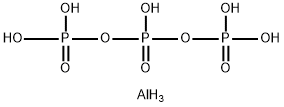
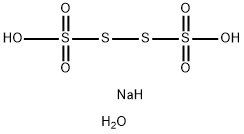
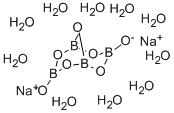


You may like
-
 Sodium tripolyphosphate 98%View Details
Sodium tripolyphosphate 98%View Details -
 7758-29-4 Sodium tripolyphosphate 98%View Details
7758-29-4 Sodium tripolyphosphate 98%View Details
7758-29-4 -
 Sodium tripolyphosphate CAS 7758-29-4View Details
Sodium tripolyphosphate CAS 7758-29-4View Details
7758-29-4 -
 Sodium tripolyphosphate CAS 7758-29-4View Details
Sodium tripolyphosphate CAS 7758-29-4View Details
7758-29-4 -
 Sodium tripolyphosphate 7758-29-4 99%View Details
Sodium tripolyphosphate 7758-29-4 99%View Details
7758-29-4 -
 Sodium Tripolyphosphate STPP CASView Details
Sodium Tripolyphosphate STPP CASView Details -
 Sodium Tripolyphosphate Anhydrous (STPP) extrapure CAS 7758-29-4View Details
Sodium Tripolyphosphate Anhydrous (STPP) extrapure CAS 7758-29-4View Details
7758-29-4 -
 Sodium tripolyphosphate 85.00% CAS 7758-29-4View Details
Sodium tripolyphosphate 85.00% CAS 7758-29-4View Details
7758-29-4
